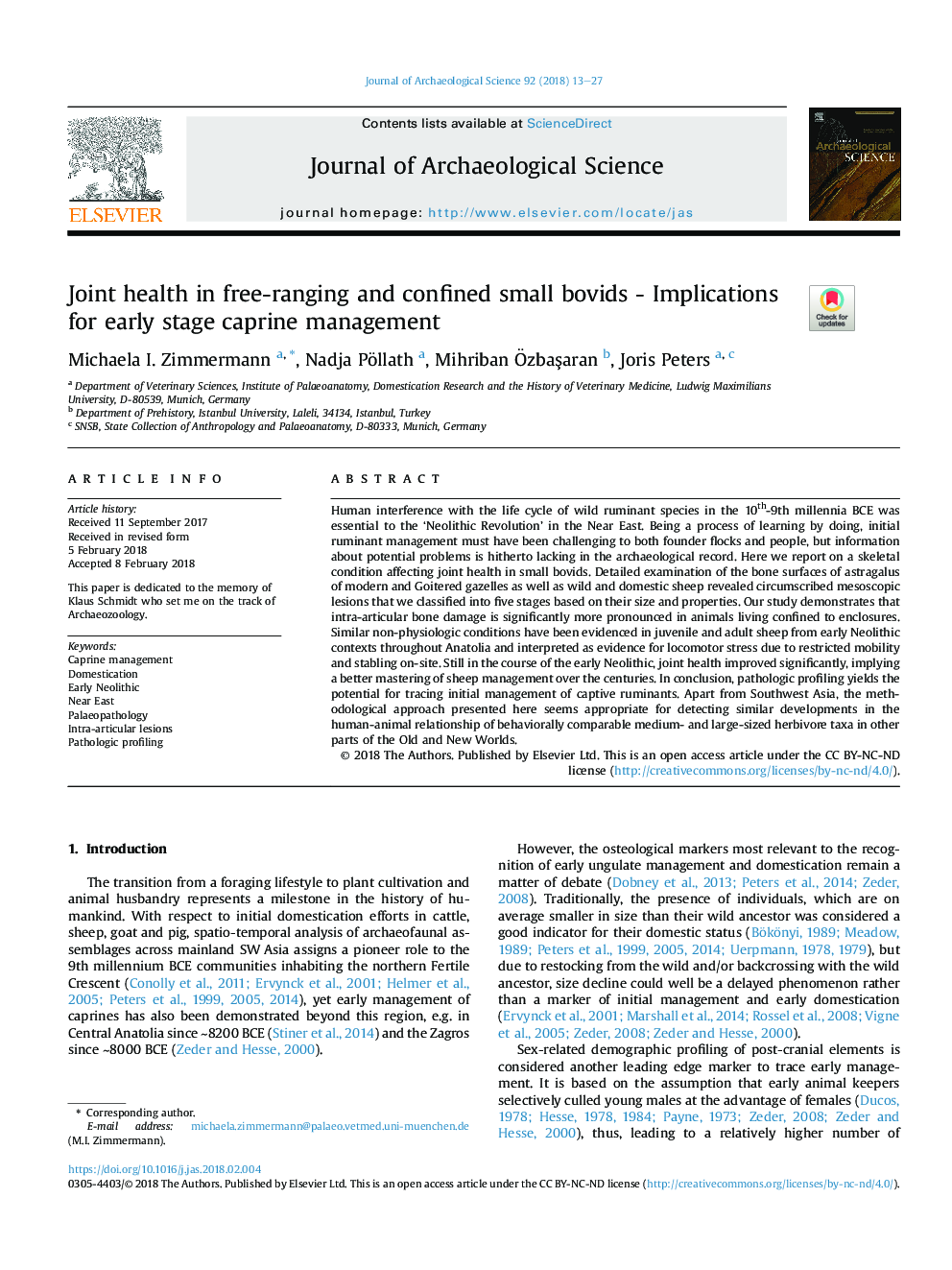| Article ID | Journal | Published Year | Pages | File Type |
|---|---|---|---|---|
| 7440952 | Journal of Archaeological Science | 2018 | 15 Pages |
Abstract
Human interference with the life cycle of wild ruminant species in the 10th-9th millennia BCE was essential to the 'Neolithic Revolution' in the Near East. Being a process of learning by doing, initial ruminant management must have been challenging to both founder flocks and people, but information about potential problems is hitherto lacking in the archaeological record. Here we report on a skeletal condition affecting joint health in small bovids. Detailed examination of the bone surfaces of astragalus of modern and Goitered gazelles as well as wild and domestic sheep revealed circumscribed mesoscopic lesions that we classified into five stages based on their size and properties. Our study demonstrates that intra-articular bone damage is significantly more pronounced in animals living confined to enclosures. Similar non-physiologic conditions have been evidenced in juvenile and adult sheep from early Neolithic contexts throughout Anatolia and interpreted as evidence for locomotor stress due to restricted mobility and stabling on-site. Still in the course of the early Neolithic, joint health improved significantly, implying a better mastering of sheep management over the centuries. In conclusion, pathologic profiling yields the potential for tracing initial management of captive ruminants. Apart from Southwest Asia, the methodological approach presented here seems appropriate for detecting similar developments in the human-animal relationship of behaviorally comparable medium- and large-sized herbivore taxa in other parts of the Old and New Worlds.
Related Topics
Physical Sciences and Engineering
Materials Science
Materials Science (General)
Authors
Michaela I. Zimmermann, Nadja Pöllath, Mihriban ÃzbaÅaran, Joris Peters,
